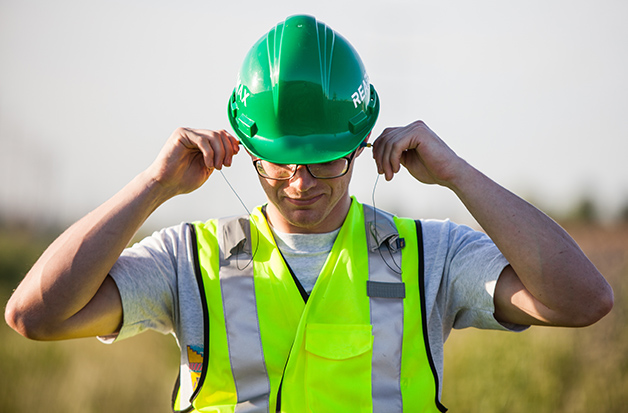Common Hearing Protection Mistakes
Noise Induced Hearing Loss (NIHL) is a progressive, debilitating and preventable condition. While every effort to protect yourself can be made, here are some common hearing protection mistakes.
Ignoring the problem
How many times have we seen children covering their ears around loud sounds, while adults blissfully absorb the full impact? Might that be a clue? Children’s higher sensitivity (and better hearing) are a clear indication of the short term pain/damage and the long term impact of exposure to loud noises. And yet, we all ignore the problem. Whether it is a night out at a loud concert or sporting event, or a half hour mowing the lawn, people ignore the problem. NIHL damage is cumulative and the short bursts from power saws, pneumatic tools and chain saws over time can lead to hearing problems. Of all of the possible hearing protection mistakes, ignoring the situation is the worst.
Ignorance
Hand in hand with ignoring the problem is ignorance. One of the biggest problems for individuals and companies is not knowing the level of exposure. Following are some charts that indicate the level of noise for various tools and activities:

Almost all common power tools produce higher than safe noise levels. A decibel meter will reveal how loud a sound is. A dosimeter gives a measure of how much exposure an individual is receiving. There are now free Android and Iphone apps that can be downloaded. (While these are not calibrated, they do provide a good estimate of the level of noise.)
In an industrial environment, proper calibration and analysis is critical to determining the actual exposure for employees. That entails both using the correct measuring device and understanding the actual exposure while using equipment. (As an example, a measurement next to a diesel engine is much different than the sound inside the operator’s cab).
One thing to remember is that according to the National Institute of Occupational Safety and Health (NIOSH) the safe exposure threshold for sound is 85 db for 8 hours. Each 3 db increase above that, halves the daily exposure limits. The NIOSH daily limits at various volumes are outlined in the chart below:

As is illustrated at some sound levels, no exposure is safe.
Drowning out loud sounds with louder sounds
Using loud music to cover up loud sounds is not a solution. It’s an even bigger problem. Headphones or earbuds have the potential to deliver damaging sounds to your ears. Limiting the usage and turning down the volume are two ways to address this issue. If other people can hear your music, you are probably at risk of causing long term damage. If you are around loud noises, use hearing protection, not noise to protect yourself.
Correct level of protection
Being aware of the noise environment, it is important to use the correct level of protection. Zero protection should not be your first choice. Thinking that in the short term when mowing the lawn or using a power tool, protection is not important, ignores the real risks. Other than a real emergency, this should never be a fallback solution.
Secondly some sounds require dual protection. If you are in an extremely loud environment, it might be important to use both plugs and earmuffs. If dual protection is needed to reach the correct level of protection, then use it.
Third don’t overprotect. If you need to take off your safety equipment to hear other employees, then you are probably using too much protection. Realize, should you need to take off your equipment to hear, you are also less likely to hear safety warnings, or other dangers in your environment.
Proper us and fit
One of the biggest mistakes is improper use or fit. The proper use of earplugs requires that they be securely fit in the ear canal. If the plugs are not properly seated, they may provide almost no protection. When muffs are used, you need to make sure that there is a tight seal as well around the ear. Glasses and other equipment can cause leaks in the seal. Again, without a proper fit the hearing protection is significantly compromised.
Replacing worn out equipment
If the muffler on your mower or chainsaw is broken, the level of noise is significantly higher. The mufflers are designed for both proper operation and noise control of this equipment. Replace them when they no longer function properly. Similarly, when your hearing protection is worn out, it is time to replace it with new equipment. Worn out plugs or muffs no longer provide the level or protection you need to safely operate in a loud environment.
Not realizing it is cumulative
When thinking about hearing protection it is important to remember that the damage is cumulative. Each damaging exposure slowly reduces the quality of hearing. While hearing aids allow for communication, they do not the entire range of sounds you once heard. It is important to protect your hearing and avoid these common hearing protection mistakes. Start today.







